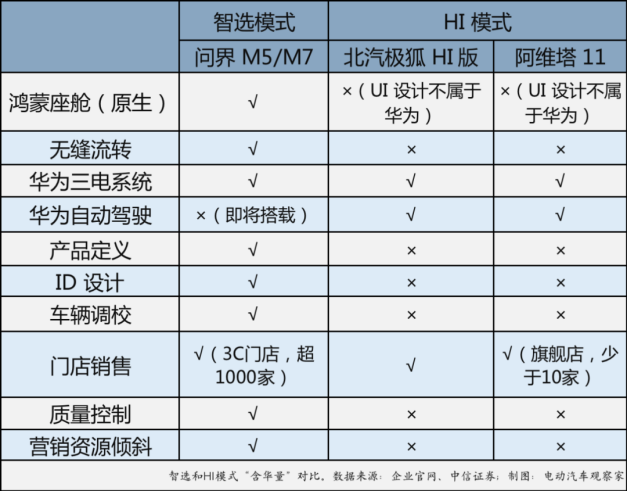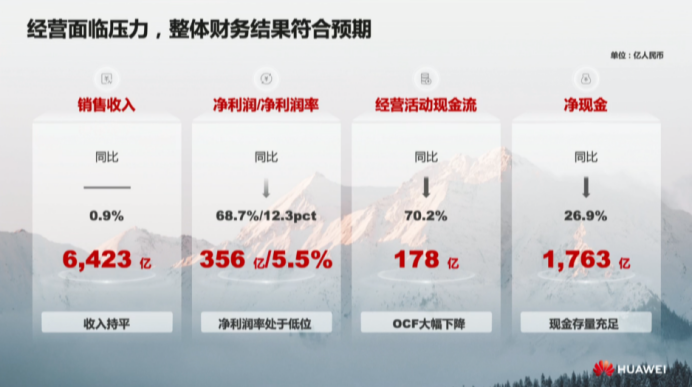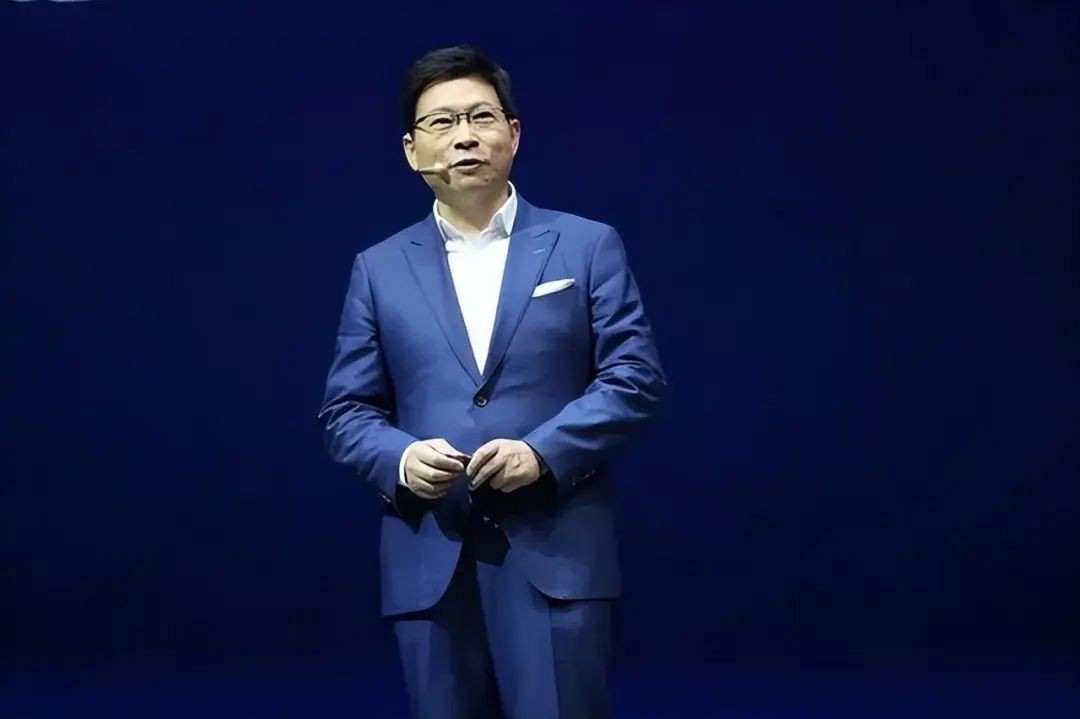Author | Wang Lingfang
Editor | Qiu Kaijun
At the end of March and the beginning of April, Huawei’s internal disagreement on the automotive business suddenly erupted.
Prior to this, in February, the HUAWEI flower logo began appearing on the “AITO” promotional posters; in early March, “HUAWEI’s Questioning Realm” appeared, with everything moving further toward the forefront for Huawei.
Suddenly, Huawei’s attitude towards the automotive business changed—
On March 31, Huawei issued another decision announcement not to build cars; at the annual report communication meeting on the same day, then Huawei rotating chairman Xu Zhijun criticized “brand abuse” and threatened to “investigate”; on that day, Yu Chengdong responded to a post on the internal forum, saying “In a few years, everyone will understand! Leave it to time to test!” The next day, Yu Chengdong further explained the so-called “abuse” at the Electric Vehicle 100 Forum and stated that they would continue to promote the intelligent car selection model.
Obviously, there are different opinions within Huawei on how to develop the automotive business. Although many car companies do not accept it, Yu Chengdong still wants to “speed up,” but “some company leaders have different opinions.” Yu Chengdong is caught in the middle, which also reflects the difficulty of handling the automotive business within Huawei.
With Huawei’s strength, popularity, and high synergy in the automotive business, combined with the timing of the rise of smart electric cars, why is it so difficult to do automotive business?
Difficulty 1: The “Soul” Business of Automobiles
Two summers ago, at a shareholders’ meeting, a shareholder asked SAIC Group Chairman Chen Hong whether SAIC would consider cooperating with Huawei in autonomous driving. Chen Hong said, “It’s like a company providing a complete solution for us, it becomes the soul, and SAIC becomes the body. We cannot accept such a result, we must hold our own soul.”
Following SAIC’s unwillingness to lose its “soul,” GAC Aion also took back its “soul” from Huawei’s hands.
On March 27, GAC issued an announcement that its holding company, GAC Aion, had changed the AH8 project from joint development with Huawei to independent development. Huawei will participate in the development and cooperation of the company’s self-owned brand models as an important supplier.
In other words, the cooperation between Huawei and Aion has been downgraded. In the past, the cooperation model between GAC and Huawei belonged to the HI mode, which is short for Huawei Inside. Huawei participated in the core project R&D of communication architecture, intelligent cockpit, and autonomous driving.
This downgrade may mean that the two sides will not carry out in-depth cooperation in the field of intelligence. As Yu Chengdong said, because Huawei’s areas of intelligence, such as algorithms, cloud, and chips, all belong to the “soft” category, it is difficult to achieve standardized large-scale production like brakes, steering, and other components. Instead, Huawei needs to get deeply involved with the car factory.Unable to deeply involve, naturally can only supply hardware.
Not only are large state-owned enterprises unwilling to concede, but new car companies are also self-developing full-stack solutions, firmly controlling their own “soul”.
At the 100 People Forum, when facing Li Xiang, the founder of Ideal, and Li Bin, the founder of NIO, Yu Chengdong frankly said, “I believe they both are not likely to choose Huawei in intelligence because they have their own pursuits. They won’t choose us for their market value and for their control points in various aspects.”
Under the pressure of billions of yuan in R&D investments each year and the inability to make massive sales to form a closed-loop business, Yu Chengdong is pushing the smart selection mode hard, hoping to make some gains.
Yu Chengdong explained that in order to simplify the cost of the smart selection mode in marketing, service, and retail, they hope to use “HUAWEI Qunjie” as a common element and a shared brand.
Perhaps due to the strong reactions from carmakers and public opinion, “HUAWEI Qunjie” was ultimately vetoed by the company’s senior executives.
In short, at the 100 People Forum, Yu Chengdong very bluntly showed the awkward situation of Huawei’s automotive business and himself. He admitted:
For new carmakers, both Li Xiang and Li Bin are here today, and I believe they are not likely to choose Huawei in intelligence because they have their own pursuits. They won’t choose us for their market value or their control points in various aspects. International giants won’t choose us because Huawei has been sanctioned. So who will choose us? Traditional carmakers. Among traditional carmakers, those afraid of losing their soul will also not choose us. Therefore, we face significant challenges because such a huge investment, without allowing for massive sales of cars using Huawei’s automation solutions, cannot achieve commercial realizations and would be unable to form a closed-loop business.
Difficulty Two: The capacity is so strong that it makes carmakers wary
Admittedly, Yu Chengdong’s intentions are good, but this move could put Huawei in touch with two red lines: firstly, the more prominent the HUAWEI/Huawei brand, the closer it is to the foundry model, which may touch the government’s restrictions on foundry policies; secondly, it is an iron law that parts suppliers do not make their car brands, and OEM and supplier positioning can only choose one.
1) Tightening of the foundry model
In the foundry field, the government has tightened the requirements. In April 2022, the Ministry of Industry and Information Technology issued the “Notice on Carrying Out the Pilot Work of New Energy Vehicle Commissioning Production”, which made clear demands for the foundry model, that is, both the commissioning company and the commissioned company must be qualified companies, under the so-called “double qualification” criterion.In other words, Huawei, lacking the “qualifications”, cannot formally adopt the “OEM model.” Huawei’s Smart Selection mode is already very blurred with the OEM model – “HUAWEI and the Automotive World.”
(2) Automakers are wary of suppliers becoming competitors
Not only a super-supplier capable of deeply participating in product definition, vehicle design, and software & hardware development, but also a super-dealer involved in brand marketing and channel construction & operation – Huawei’s capabilities are comprehensive and terrifying.
With Huawei’s capabilities, the only obstacles to car manufacturing seem to be battery capacity and qualification issues. The deep collaboration with Automotive World makes insiders believe that Huawei is seemingly only short of an “official announcement” to manufacture cars.
This means that a partner can potentially turn into a competitor at any time.
Not just manufacturing cars, but also supplier brands should not be superior to automaker brands.
This iron rule is the same both in China and internationally. For example, Magna, providing complete car OEM services to 6 models across 4 brands, including BMW, Daimler, Jaguar Land Rover, and Toyota, still has to remain respectfully behind automakers.
Bosch and ZF, with a century of history, are also invisible giants hidden behind automakers.
In automaker promotions, Huawei’s brand positioned before the automaker brand is, essentially, no different from manufacturing cars for consumers and the automotive industry.
(3) A strong supplier may erase the distinction of automaker brands
Currently, Huawei’s collaborations with automakers mainly follow three models: one is the traditional Tier 1 automotive components supply model; the other two can be briefly summarized as: Smart Selection models can be sold in Huawei stores, while HI models have Huawei’s intelligent driving solutions but are not sold in Huawei stores.
Both major collaboration models have their advantages, with the HI model’s intelligent driving solutions appearing to offer more possibilities for now.

However, at Huawei’s recent spring launch event, Yu Chengdong announced that both M5 and M7 models from the Automotive World would adopt high-end intelligent driving systems. Some insiders analyzed that the difference between the Smart Selection and HI models in terms of intelligent driving will eventually be erased, ultimately leading to a loss of product distinctiveness, which may also be an important reason for the downgrade of cooperation between GAC and Huawei.## Challenge 3: Hindered Business & Limited Chip Supply
According to Yu Chengdong, placing Huawei’s brand at the forefront facilitates brand operation under the smart selection mode for different car models, helping consumers establish a clear understanding of ‘Huawei’ cars. Externally, this could be the intention, but internally, he might want to gradually transition to car manufacturing using this mode.
However, Ren Zhengfei and other Huawei executives have been steadfast in their belief not to enter car manufacturing.
As a trillion-dollar industry, the automotive sector can undoubtedly support Huawei’s development and growth. However, massive investment, intense competition in a “red ocean”, and potential US sanctions could make things even more difficult for the already stressed Huawei.
** 1. Hindered Business **
As a non-listed company, Huawei’s primary source of operating capital is revenue.
Impacted by consecutive US sanctions, Huawei’s performance has not been impressive.
In 2022, Huawei’s global sales revenue was 642.3 billion, an increase of 0.9\% YoY; net profit was 35.6 billion, a decrease of 68.7\% YoY; cash flow from operating activities was 17.8 billion, a decrease of 70.2\% YoY; net cash was 176.3 billion, a decrease of 26.9\% YoY.
By the end of 2022, Huawei’s net cash holdings were 1,763 billion, a decrease of 26.9% compared to the same period in the previous year.

Meanwhile, Huawei’s R&D investment reached a record high of 161.5 billion in 2022, accounting for 25.1% of the annual revenue, with both expenses and proportion breaking historical records. The R&D expense rate rose by 2.7 percentage points compared to 2021. Huawei stated in their financial report that the increase in R&D investment is mainly due to continuous investment in future-oriented basic research and open innovation in cloud, intelligent automotive components, and core software technologies.
As the only loss-making business for Huawei, the investment in automotive seems like a bottomless pit. In Yu Chengdong’s words, “The car business has an annual investment of around 10 billion yuan, with over 7,000 direct R&D personnel and more than 10,000 indirect personnel from Huawei’s platform.”
However, the revenue from the smart car business is only 20.8 billion, showing a considerable disparity between the two.
 Translate the following Chinese Markdown text into English Markdown text, in a professional manner, retaining the HTML tags within Markdown, and output the result only.
Translate the following Chinese Markdown text into English Markdown text, in a professional manner, retaining the HTML tags within Markdown, and output the result only.
Considering Huawei’s current financial situation, it remains uncertain whether they can tolerate the long-term losses in the automotive business.
The most feasible way to build cars is to go public and raise funds. So far, Ren Zhengfei apparently has no intention of doing this.
(2)Building cars without chips
Another consideration for Huawei not to build cars may be the chips.
As a car company, not being able to produce chips is not a big problem, but for Huawei to build cars without chips is a major issue.
The United States does not allow foundries to manufacture chips for Huawei, and cars require a large number of chips. Currently, Huawei cannot solve the chip problem, and even if they manage to start an automotive business, the United States can easily choke it off by controlling chip supply. Without chips, Huawei’s car-building endeavor would be like a tree without roots.
In other words, once the automotive business comes to a halt after massive investment, Huawei will inevitably fall into a quagmire.
Of course, another challenge for Huawei to build cars is qualification. However, among these challenges, qualification might be the easiest one to solve.
Challenges abound, but strategic position remains unchanged
This round of “palace drama” within Huawei’s enterprise business has been rather entertaining for spectators. The heated media discussions have further amplified the existing differences in opinions.
However, regardless of the direct confrontation against “brand abuse,” Huawei’s position on the automotive business remains generally consistent in not building cars and helping companies build better cars; with minor differences, Yu Chengdong favors the Smart Selection model, while Xu Zhijun talks about being an “incremental parts supplier.” In any case, the Smart Automotive Solution business receives high expectations as a new division within Huawei’s overall strategic blueprint.
As for Yu Chengdong, the one in control, the supplier model and the HI model have been basically ruled out in Huawei’s early trial-and-error phase, leaving only the Smart Selection model, backed by Seres as an example. Yu Chengdong also persuaded Chery and JAC Motors, while Arcfox is shifting towards the Smart Selection model as well.
At present, after the “palace drama,” Yu Chengdong’s automotive business will be confined within the scope of the Smart Selection model, and will not push forward in the short term, maintaining the “not building cars” stance.
“Leave it to time to verify?”
No, history is written by the victors. What Yu Chengdong needs is not time, but victory.
This article is a translation by ChatGPT of a Chinese report from 42HOW. If you have any questions about it, please email bd@42how.com.
